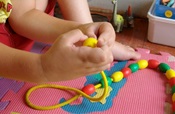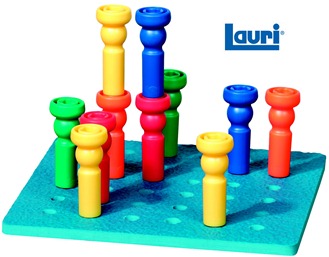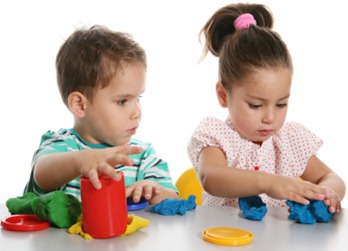Pre-Writing Activities
As you know, Reception is where Britain's youngest learn how to write.
There are a number of steps that precede learning to write:
| Reading | Writing |
| 1, Looking at books and words | 1, Making marks on paper |
| 2, Hearing and recognising noises, linking those noises to pictures | 2, Telling an adult that the marks mean something |
| 3, Picking up the first phonic sounds | 3, Beginning to write the letters in their own name |
Before even making marks on paper, children need to be able to hold a pencil. This is where the fine motor skills come into their own. these are exercises that strengthen the muscles in hands, wrists, arms and shoulders.
In our Reception, we spend most of the Autumn term focusing on fine motor activities for those children who need it. Many high attainers can begin Reception with excellent fine motor skills and are ready for writing, sometimes lower attainers are physically ready to write, but all children can benefit from Fine Motor activities.
Here follows a list of Fine Motor activates which will hopefully give you some inspiration:
Pennies in a Jar

Picking up small objects and putting them into small holes actually requires a lot of co-ordination. If funds are a bit tight, you can cut out pieces of card in different shapes and use a small Pringles tin as a pot, simply cut a hole in the plastic lid. Children could have fun decorating the tins.
Alternatively, you could pick up a cheap piggy bank from a car boot sale.
This activity improves children’s pincer movements and builds up strength in the muscles in their hands.
Threading
A lot of fine motor activities are putting small objects into small holes, like coins in a penny jar. Threading is much along the same lines, children push any type of thread through holes in card or wood.
 image from apartment therapy.com
image from apartment therapy.com
There’s also the threading beads onto a cord which follows the same principle.
 image from ot mum learning activities.com
image from ot mum learning activities.com
Children really like making necklaces for adults so they can be quite motivated to thread beads, you can also encourage them to make patterns out of the beads using different colours or shapes and you can encourage the children to count how many beads they have threaded, so that’s maths in there too!
Pegs in a Peg Board
There are thousands of pegs and boards you can use for children to practice with. All of them work on children’s fine motor skills to some degree.
 image from toys are tools.com
image from toys are tools.com
The little children do enjoy the challenge of filling the board and like creating a repeating pattern. You can also encourage children to count how many pegs they’ve done and ask them to see who can put the most pegs in the boards.
Tweezers
The action of using tweezers exercises key muscles in the hand. Encouraging the children to pick up small objects and place them in small containers encourages increased coordination and improves those all important fine motor skills.
 image from learning resources.com
image from learning resources.com
These are the exact tweezers that we use in our setting and the children really enjoy using them. I used Activia yoghurt pots for the children to take small objects out and put others in.
The objects you could use are small toys, dried peas, pasta shapes or anything small you have in your classroom.
Play Dough
Whether shop bought or salt dough, children love playing with play dough!
 image from sure baby.com
image from sure baby.com
Sure Baby.com have a recipe for edible play dough! Amazing!
With play dough, children can roll, squeeze, poke, push, flatten, squish, mush, bang, pinch and stretch. They can use small movements to make something specific and big movements to explore shape. Using play dough tools also encourages fine motor skills as children shape and cut the play dough.
Tracing Lines
This might seem a little like worksheets, but pages where the children can follow lines not only improves fine motor skills but also gives children the chance to practice concentration.
 image from pininterest.com
image from pininterest.com
I’ve noticed that the children do find these sheets difficult initially but it is important to repeat activities in the Early Years so that children can really get to grips with them.
Or something similar. Write Dance is fantastic and really improves fine motor skills. I have used Write Dance in three separate settings and implemented it in my own, it really improves the fine motor skills in those children who are really struggling.
You don’t have to use the words with the CD, there are instrumental tracks which are much better. Read the dance instructions as they will tell you what to do and have a cheat sheet beside you as you’re doing the dance with the children.
Write Dance takes five minutes out of your school day and could be used as a brain break between sessions.
More Coming Soon!
There are some ideas to get you started. I’ll post more later but if you have any other ideas please get in touch!

No comments:
Post a Comment